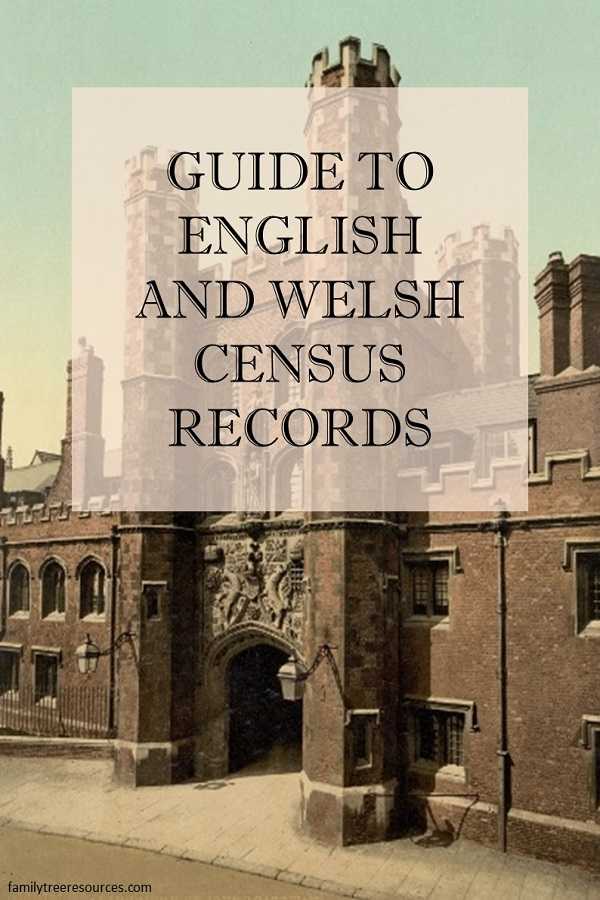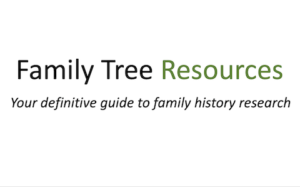
Census Returns are completed so an official record can be maintained of households and their occupants at the relevant date, being compiled every 10 years since 1801. Very little detail was recorded then as the government merely required a headcount. Very few of these original censuses survive.
It was only in 1841 that names of all the household occupants began to be recorded. The census was not taken in 1941 because of World War 2.
You are only able to view up to the 1911 census in Record Offices because it is felt people who may still be alive will not want their details published. Census Returns from 1921 are kept by the Office of National Statistics and will be released after 100 years from the census date have passed.
Unfortunately, you will have to wait until the 1951 Census is released to find any more information from Census Returns after 1921 because the 1931 Census was destroyed in World War 2, and the 1941 Census was not taken also because of World War 2.
Using the Census For Genealogy
It is always best to start with the 1911 Census, and once you have found your ancestor’s family in that Census, to follow them back through the years to 1841.
This will help you to ensure that you are following the correct family, and do not research the wrong line.
Census Dates
| Census Dates | |
|---|---|
| 1841 | 6th June 1841 |
| 1851 | 31st March 1851 |
| 1861 | 8th April 1861 |
| 1871 | 3rd April 1871 |
| 1881 | 4th April 1881 |
| 1891 | 6th April 1891 |
| 1901 | 1st April 1901 |
| 1911 | 3rd April 1911 |
How the Census Was Conducted
Census schedules were collected by the enumerator who then entered the details into a book. If you are not familiar with the area, town addresses can be puzzling because the enumerator could choose his own route as long as he did not miss any houses.
You may discover he had not gone down a long street in full, deciding instead to cover the side streets as he made his way down the main street.
It was not unheard of for the enumerator to misinterpret the writing of the household head or to fill in the census himself if household members were illiterate.
He could also have misheard what was being said, so he may have recorded the information incorrectly. The schedules were destroyed many years ago, but the books still survive and are kept by the National Archives.
All the households had their own schedule number. The last occupants of the house were represented by the enumerator placing a diagonal line just before the name column and the last occupant of the building he defined by using a double diagonal line.
You may find there are several different households within one building, and these households could include family members, lodgers, boarders, servants and nurses. Both lodgers and boarders paid rent, but boarders ate with the main family.
Heads of Households Entered in Census Returns
The census was taken in earlier centuries in very much the same way it is today – heads of households were responsible for providing details of the persons living in the abode at midnight on the appropriate date.
Sometimes a household head misunderstood and wrote down all members of the family whether they were living in the house or not, with some recording people who had died, but only family members living there should really have been recorded.
All household occupants are defined by their relationship to the head of the household on census returns. Please use caution however when looking at this side of the information.
I have come across circumstances where a niece or nephew could be either the head’s niece or nephew or his wife’s if he was married.
Census Reference
A Census Reference is the unique number each census has been allocated by the National Archives:
| Census References | |
|---|---|
| Year | Reference |
| 1841 | HO107 |
| 1851 | HO107 |
| 1861 | RG9 |
| 1871 | RG10 |
| 1881 | RG11 |
| 1891 | RG12 |
| 1901 | RG13 |
| 1911 | RG14 |
This is an example of the full Census Reference given for Bryanston Square, Upper George Street, Marylebone in the 1851 Census:
1-21 HO107/1489 518-525
23-26 HO107/1489 649-651
28-48 HO107/1489 525-531
1489 is the Census Piece and 518-525, 649-651 and 525-531 are the census folios the address can be found on.
As Marylebone is such a vast area, the enumerator would have had a lot of individual books that when filled in were collected and later bound into a single book so it was easier to access. The bound book is called a census piece.
The folio number makes it easier to find the address and is at the top right hand corner of every other census page. The sheets in the original books the enumerators used were double sided so the folio number is only listed on every other page.
It was not unheard of for the person stamping the folio numbers on the page to make a mistake and either stamp consecutive sheets with the same number or to miss stamping a sheet altogether so you sometimes see 6a or even 6b for example.
A page number is also listed, but this should be ignored as this is the page number from the enumerator’s individual book as stated above.
Census Street Indexes
A street index exists for most English and Welsh towns and cities, but there is no index for villages and so the reference includes the piece number but not any folio numbers.
One of the best ways to find out more about the Street Indexes available is to go to the Historical Streets Project. It is a good source of information, but is now read-only.
Only the 1841, 1851, 1861, 1871 and 1891 census returns have been indexed. They are listed by Registration District, so you do need to know the rough area in which the street you are looking for was situated.
The National Archives is in the process of making their books of street indexes for the 1841-1891 census returns available online.
Birthplace of Household Occupants Entered in Census Returns
The birthplace of household occupants could be very useful because it could help you to further your research, as knowing the place of birth could help you to track down an appropriate entry in the parish register or find the correct birth certificate using the GRO Index.
The occupant may have lied about their age, making it prudent to look for a few years either side. Sometimes however, and this is always disappointing for the genealogist, the occupant did not remember where they were born so the birthplace was listed simply as unknown or the column left blank.
Problems Finding People on Census Returns
If you do not find the relative you are seeking, it is worth trying alternative spellings of the name, such as Wm for William or using a wildcard for the surname, such as D*n*k*ley. This would bring up Donkley, Donckley, Dunckley, Dunkley etc.
Another idea is to use a website’s search facility to peruse the census images themselves for the street if you already have some idea of where your ancestor was living. You may find that your ancestor was living there, but the transcription is incorrect. You can also check the Historical Streets Index.
You can also search by first name, age and place of birth. This will bring up numerous possibilities, one of which may be your ancestor, but the surname was transcribed incorrectly in the index.
It is entirely possible that your ancestor did not know their place of birth, and, if their parents had moved to another area soon after the birth, your ancestor may have believed that this place was their birthplace.
Incorrect information may have been given to the enumerator by a householder, which might not necessarily have been the head of the house. In some cases, a lodger or child may have supplied the information, and could have given inaccurate details.
If a person did not want to admit that they were as old as they actually were, they may have shaved some years off their true age. I have found evidence of this in that some relatives I have checked over a ten year period had, according to the census, only aged 6 years during that time.
If your ancestor was in prison, some enumerators only wrote down initials, rather then giving full information.
If a person was in hospital, or had an occupation such as a commercial traveller, who would travel around the country, further research may be required to locate them because they would not appear at the family residence.
The relationship between householders and the head of the household was not always recorded accurately – if the head of the household was married, and a niece was living with them, it may turn out that the niece was actually his wife’s niece. A person entered as a brother could also be a brother-in-law.
If you have found a baptism record for your ancestor, but cannot find them in the census, it is important to remember that their place of baptism may not necessarily be where they were born. You may, therefore, have to think of another way of tracking them down.
If the mother had been previously married, and had had children from this marriage, and they were living with the family, you may find that the enumerator has inadvertently used the new husband’s name for the children of this previous marriage.
It may be prudent to check for your ancestor using both surnames if the mother had been married more than once.
More People Living in the Household in a Census
If you find your ancestor in a surname index on a family history website, and then view the census image, it is important you ensure that you have found all the members of the household.
It is not uncommon to find, especially if the household is at the bottom of the census page, that the household actually continues over to the next page. You should always go on to the next page just in case. I know that I have found additional relatives by utilising this method.
It is equally important to go back to the previous page if the household is at the top of the page for the same reasons.
Where to find Census Returns
Most Record Offices hold 1841-1901 Returns for their local areas. These can be viewed at the National Archives, who also provide access to the 1911 Census.
The National Library of Wales holds Censuses from 1841-1901 on microfiche for all of Wales. They state they can offer access to 1911 Census.
You can also access free census records online at freecen which is transcribed by volunteers and contains partially complete indexes, although more information is being added all the time.
1841-1911 Census Returns
You can view 1841-1911 Census Returns at Ancestry and FindmyPast.
Ancestry
Ancestry is great for anyone who does not have the time to, or is unable to, visit Record Offices or Libraries.
It is especially good if you wish to access records from the comfort of your home.
Read my in-depth review to find out more about its features, advantages, and disadvantages.
FindmyPast
FindmyPast is good for anyone, whether they are just starting their family history journey, or have already conducted some research.
It is especially good for people who wish to read newspaper articles.
Read my in-depth review to find out more about its features, advantages and disadvantages.
